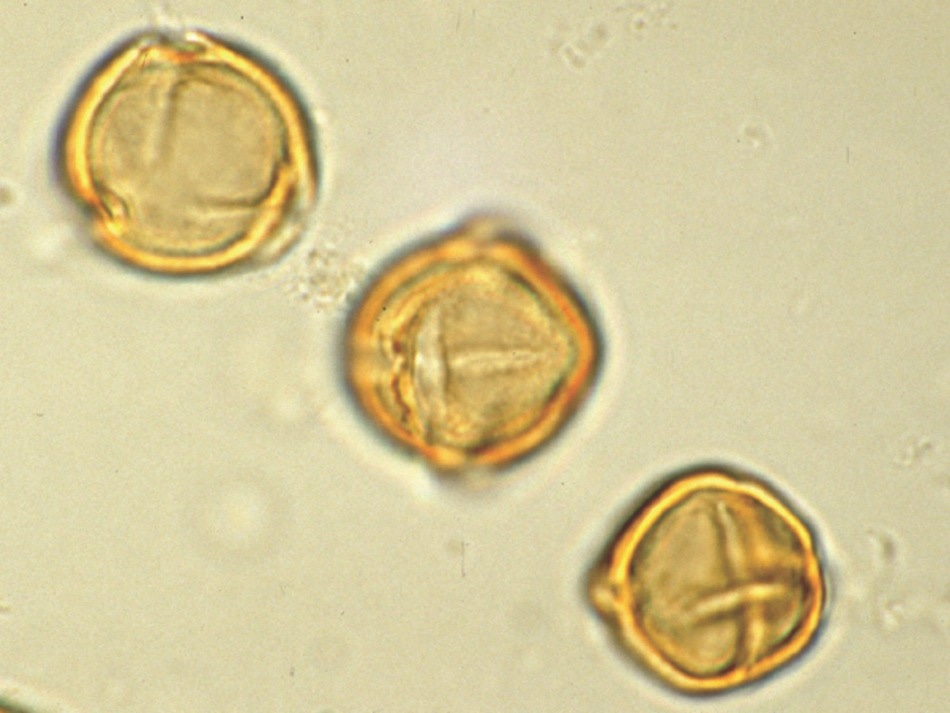Dec 11 2019
Identifying natural carbon sinks and perceiving how they function is crucial for humans to tackle global climate change. Although the tropical coastal wetlands are considered to be essential, to date, there is very little data to illustrate their advantages.
 Pollen under the microscope: pollen preserved in the sediment allows scientists to travel back in time to reveal the past ecosystems and climate dynamics from hundreds to thousands of years ago. Image Credit: Kartika Anggi Hapsari.
Pollen under the microscope: pollen preserved in the sediment allows scientists to travel back in time to reveal the past ecosystems and climate dynamics from hundreds to thousands of years ago. Image Credit: Kartika Anggi Hapsari.
A study, headed by the University of Göttingen together with the Leibniz Centre for Tropical Marine Research in Bremen, and the University of Bremen, has revealed that mangrove ecosystems must be preserved and restored as part of the fight against carbon level rise in the atmosphere. The study was reported in Global Change Biology.
Scientists performed this study on ecosystems in the mangrove-fringed Segara Anakan Lagoon in Java, Indonesia. This coastal lagoon is recognized to be one of the most efficient carbon sinks among the mangrove ecosystems worldwide.
The researchers examined a 5-m-deep core of sediment for its bio-geochemical composition and age, along with elements, pollen, and spores. The team investigated four different time periods over 400 years with varying climates. Furthermore, information from societal and ecological changes was combined with those from land and coastal changes.
The study outcomes illustrate that the carbon accumulation and environmental dynamics in the lagoon were regulated specifically by human activities and climate variations. The team discovered that the interaction of these two factors had an impact on the saltiness and sediment of the lagoon, which in turn alters the composition of the organic matter (including carbon), and how it was deposited in the lagoon, thereby contributing further to the “sink of carbon”.
Additionally, the researchers also identified that the weather was the main cause for washing the carbon compounds, in the form of organic matter, to the lagoon from remote regions located far away from the coast. In the past, these remote areas included natural mixed forest, but at present, they are agricultural lands.
Coastal lagoons, like Segara Anakan, are specifically at risk due to the destruction of mangroves by the humans as well as the impact of global environmental change, such as increasing sea levels. The rising water levels, in turn, lead to extreme floods, habitat loss, and coastal erosion, which threatens the society.
Our research shows that people need to prioritise mangrove ecosystems for conservation and restoration because mangroves absorb carbon efficiently. It is not enough just to focus on cutting carbon emissions. Society needs to also identify efficient and natural ecosystems, like those dominated by mangrove vegetation, to remove carbon.
Dr Kartika Anggi Hapsari, Study First Author, Department of Palynology and Climate Dynamics, University of Göttingen
“This research also really emphasises the importance of interdisciplinary working,” added Hapsari.
In this case, palaeoecological researchers, who look at organism and environmental interactions across geologic timescales, worked with researchers from biogeochemistry, who look at organic chemical compounds in sediment, historical cartography and socio-economy to relate the changes in landscape and socioeconomic condition over time. By combining different perspectives, we can be sure our results reach the right conclusion and are meaningful.
Dr Kartika Anggi Hapsari, Study First Author, Department of Palynology and Climate Dynamics, University of Göttingen